Bioinspired temporal supramolecular polymerization
Thriving natural systems precisely regulate their complex chemical organizations in space and time by recruitment of a complex network of fuel-driven, kinetically controlled, out-of-equilibrium transformations. Indeed this provides an active, adaptive and autonomous smart actions & functions. In contrast, synthetic systems exhibit simpler behavior owing to thermodynamically driven supramolecular polymerization with […]
This article is about a Kingfisher inspired Bullet Train. The design inspired from the kingfisher’s long beak and head allow for the train to move at extremely high speeds. Robertson goes into more detail on the bioinspiration throughout.
Learn more (opens external site)
The article is about biomicry shoes by Marieka Ratsma. They use a bird’s cranium structure to inspire the heel of the shoe. The connection between nature, function, and fashion is extremely interesting.
Learn more (opens external site)
News, Orb-weaver spider uses web to capture sounds
A study of orb weaver spiders finds their massive webs also act as auditory arrays that capture sounds, possibly giving spiders advanced warning of incoming prey or predators.
In experiments, the researchers found the spiders turned, crouched or flattened out in response to sounds, behaviors that spiders have been known to […]
Key to success of drug-resistant bacteria
Researchers have discovered how Gram-negative bacteria — which cause drug-resistant pneumonia, bloodstream infections, and surgical site infections in hospitalized patients — finish building a crucial component of their outer membrane that shields these pathogens from attacks by the immune system and antibiotics. The new findings could accelerate the development of novel drugs to counteract these […]
Researchers from Monash University have discovered a new design motif derived from the rigid external covering of invertebrates that may help create more damage tolerant materials for future building and construction.
In a paper published in Nature Communications, Professor Wenhui Duan from the Department of Civil Engineering […]
News, Insect Silk as Templates
The CSIRO Silks group is primarily interested in using proteins as polymers for rational design. Naturally occurring structural proteins are ‘information-rich’ molecules. Based on the precedent set by nature, these structural proteins provide a rich landscape for the rational design of advanced functional materials. Advances in molecular biology make it possible to readily modify the […]
The design of a smart robot for colonoscopy is challenging because of the limited available space, slippery internal surfaces, and tortuous 3D shape of the human colon. Locomotion forces applied by an endoscopic robot may damage the colonic wall and/or cause pain and discomfort to patients. This study reports a Soft […]
Most studies on animal personality evaluate individual mean behaviour to describe individual behavioural strategy, while often neglecting behavioural variability on the within-individual level. However, within-individual behavioural plasticity (variation induced by environment) and within-individual residual variation (regulatory behavioural precision) are recognized as biologically valid components of individual behaviour, but the evolutionary ecology […]
Recapitulating avian locomotion opens the door for simple and economical control of legged robots without sensory feedback systems. Specifically, the avian-inspired robot leg, BirdBot, has been developed with the potential for self-engagement and disengagement without sensory feedback control. This design approach embeds “intelligence by mechanics”, effectively sidesteps computational algorithms vulnerable to […]
The following paper explores the quill properties and structures of the Hystrix(Old World) and Erethizon(New World) porcupines. Both quills have a keratinous cortex filled with closed cell foam, that have good tensile strength, extensive deformation properties, and compressive capabilities. The main difference between the quills is the presence of stiffeners inside […]
Scientists at Nanyang Technological University, Singapore (NTU Singapore) have developed a pollen-based ‘paper’ that, after being printed on, can be ‘erased’ and reused multiple times without any damage to the paper.
Learn more (opens external site)
Researchers from the University of Oregon have grown rodent retinal neurons on a fractal-patterned electrode, one that mimics the repeating branching pattern in which neurons naturally grow. These neurons, which themselves are fractals, will connect better to a fractal-patterned electrode than they do to more traditionally shaped electrodes, allowing better signal […]
UC Berkeley featured biomimicry
Researchers observed the Woodpecker’s exceptional ability to absorb shock. For reference, they withstand 1200gs of force whereas a human receives 120gs of force in a car crash. In an observation of the Woodpecker’s structure, researchers hoped to biomimic the Woodpecker’s ability to create better shock absorption structures. The researchers concluded that […]
The emerging novel power generation technology of triboelectric nanogenerators (TENGs) is attracting increasing attention due to its unlimited prospects in energy harvesting and self-powered sensing applications. In this review article, we present a comprehensive review of various researches within the specific focus of bioinspired TENGs and TENG enabled biomimetic applications. Various […]
Manta rays are very efficient swimmers which are able to travel at high speed over large distances despite their large sizes. This paper covers the design, experiment and prototype testing of a propulsive mechanism for Robot Manta Ray. The propulsive mechanism and the pectoral fins of the Robot Manta Ray were designed based on some […]
The Future of Bird-Friendly Glass is Clear…
While the advancements and technological discoveries humans make may seem useful to us, they often impact other animals or elements in our world very differently. We typically only acknowledge our own needs and design solutions for those, without realizing what affect it may have elsewhere. One example of this are the […]
Study reveals shock-absorbing ability of woodpecker beaks
Researchers at the Mississippi State University have discovered the exceptional energy dissipation abilities of the woodpecker’s beak. Woodpeckers use their beaks to make holes in trees for a variety of reasons, the most prevalent of which is to find food. Insect larvae discovered beneath the surface of tree bark are eaten […]
Paper, Orb Webs Act as Antennas for Frequencies
New research shows that hearing in a species of orb-weaving spider called the bridge spider (Larinioides sclopetarius) is not constrained by the organism’s body but is extended through outsourcing hearing to its proteinaceous, self-manufactured orb web.
Learn more (opens external site)
In a review recently published in the Chemical Engineering Journal, researchers discussed the preparation of superior graphene composite coatings using bioinspired techniques.
Learn more (opens external site)
Structure and mechanical behavior of a toucan beak
In nature, toucans have large and hard beaks that they use to break up food. Despite the size of their beaks, it is actually very light. After researchers investigated the beaks of toucans, they found out that the beak consists of a network of micro scaffolds and thin membranes, which are covered by a hard […]
New biological tools provide new techniques to probe fundamental biological processes. Here we describe the burgeoning field of proteolysis-targeting chimeras (PROTACs), which are capable of modulating protein concentrations at a post-translational level by co-opting the ubiquitin-proteasome system. We describe the PROTAC technology and its application to drug […]
Transitions to terrestriality have been associated with major animal radiations including land snails and slugs in Stylommatophora (>20 000 described species), the most successful lineage of ‘pulmonates’ (a non-monophyletic assemblage of air-breathing gastropods). However, phylogenomic studies have failed to robustly resolve relationships among traditional pulmonates and affiliated marine lineages that comprise […]
Jacob Peters and L. Mahadevan from Harvard University, with Orit Peleg from the University of Colorado sought to detail the precise changes that a swarm of honeybees makes as air temperatures rise and fall. It was known that, when unable to relocate to a place with a more habitable temperature, a […]
The Meiji University researchers developed a device, Norimaki Synthesizer, that can imitate all kinds of flavory sensations as the subject put the device on their tongue. The manipulation of taster perception is achieved by electrolytes inserted into five gels that control the intensity of five basic flavors: sour, sweet, bitter, salt, […]
Combining engineered flaps with other structures inspired by seagull wings improves lift, reduces stalling in wind energy turbine blades
Learn more (opens external site)
“In modern societies, sleep deprivation is a serious health problem. This problem could be induced by a variety of reasons, including lifestyle habits or neurological disorders. Chronic sleep deprivation (CSD) could have complex biological consequences, such as changes in neural autonomic control, increased […]
This paper presents a novel meta-heuristic algorithm named Chameleon Swarm Algorithm (CSA) for solving global numerical optimization problems. The base inspiration for CSA is the dynamic behavior of chameleons when navigating and hunting for food sources on trees, deserts and near swamps. This algorithm mathematically models and implements the behavioral steps […]
According to this article, friction is an underappreciated problem in engineering, as it is often responsible for great energy loss within machines and robots. But, in order to combat this, researchers looked into snake skin as a potential model for a new synthetic material to reduce friction. In the most recent […]
The Wyss Institute integrates biological design principles in develop new engineering innovations in the field of medicine and and for improving sustainability. An intern will work with a team of scientists, engineers and clinicians, from Harvard’s Schools of Medicine, Engineering, Arts & Sciences, Design, and Education as well as 12 collaborating academic institutions and hospitals. […]
Achieving fast and agile swimming still remains extremely challenging for a self-propelled robotic fish due to the constraint of actuator’s propulsion capability. In this article, we report an untethered bioinspired robotic fish, which combines a high-frequency oscillation and a compliant passive mechanism to realize fast swimming, high pitch maneuvers, and even the leaping motion. For […]
Abstract:
Besides the life-as-it-could-be driver of artificial life research there is also the concept of extending natural life by creating hybrids or mixed societies that are built from natural and artificial components. In this paper we motivate and present the research program […]
Paper, Energy Efficiency Inspired by Bees
Kerbel and Kulyk were interested in designing an accessible, convenient, and sustainable energy efficiency technology to reduce pollution offsets and costs.
They were inspired by the complex communication system in beehives called emergence. Kerbel and Kulyk mimicked this bee communication by developing an algorithm that allows all parts of a […]
The bioengineering of cannabis
Genetic modification could enable industrial-scale production of cannabinoids that have pharmaceutical potential. Genetic engineering could provide more efficient alternatives. Some researchers and biotechnology companies are aspiring to replace cannabis plants with microorganisms that have been genetically enhanced to spit out THC, the non–psychoactive compound cannabidiol (CBD), and myriad other cannabinoids of pharmaceutical interest. Others are […]
Biomimicry in Architecture
This article breaks down historic applications of biological design translated into architecture. Although the term “biomimicry” was coined in the mid-20th century, an early example of bio inspired design was displayed at the 1900 Worlds Exposition in Paris. Architect Rene Binet’s Monumental Gate […]
One of the most basic—and powerful—tools in all of science and medicine is the light microscope. The Fletcher Lab at UC Berkeley and collaborators in the US and around the world are designing technology that turns the camera of a mobile phone or […]
Reversing hearing loss with regenerative therapy
Frequency Therapeutics is a biotech company that is seeking to reverse hearing loss not with implants or hearing aids but through regenerative therapy. By planting stem cells in the ear, it enables tiny hair cells to emerge enabling its users in fix their speech perception aka hearing. So far 200 people […]
A bio-inspired auxiliary fishbone-shaped flow field (AFFF) pattern is proposed and designed at the cathode flow field plate (FFP) of polymer electrolyte membrane (PEM) fuel cells, in order to enhance under-rib mass transport and water removal from gas diffusion layer (GDL). The bio-inspired AFFF pattern is numerically […]
Program Coordinator for Vanderbilt University’s Innovation Center
The Program Coordinator for Biomedical Innovation works in the Wond’ry, Vanderbilt University’s Innovation Center. The ideal candidate embodies a demonstrated commitment to, and interest in entrepreneurship and innovation in the biomedical life sciences. The Biomedical Innovation Program Coordinator will support the day-to-day and long-term management, implementation, evaluation, and growth of core programming for the Wond’ry’s […]
Since the birth of synthetic hydrogel 60 years ago,
hydrogels possessing various useful properties and functions have
been developed. The research directions of hydrogels have
expanded to diverse application fields as well. However, in contrast
to natural hydrogels found in biological soft tissues, which have
elaborate […]
Learn about our two Decals!
 Click here to find out more about our Fall Bioinspired Design Decal and our Spring Bioinspired Design in Action Decal – ALL MAJORS are welcome.
Click here to find out more about our Fall Bioinspired Design Decal and our Spring Bioinspired Design in Action Decal – ALL MAJORS are welcome.Berkeley BioDesign Community
 Click here to learn about the BioD: Bio-Inspired Design @ Berkeley student organization or here to signup for more info.
Click here to learn about the BioD: Bio-Inspired Design @ Berkeley student organization or here to signup for more info.Search
Student Login

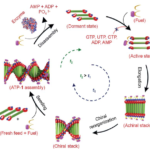
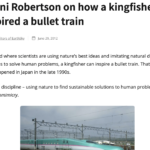
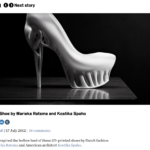


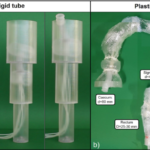
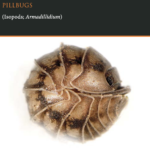
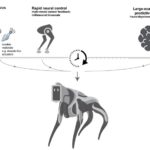
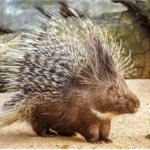
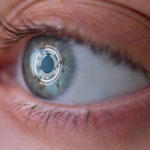
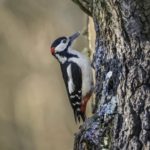
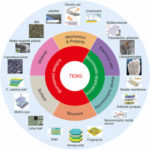
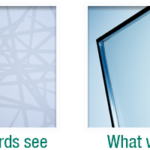

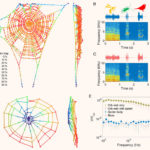
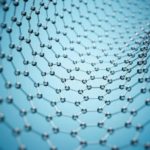



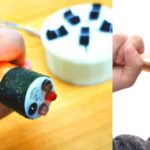
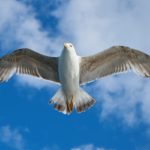

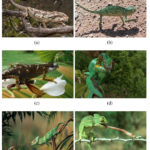
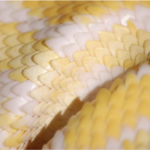

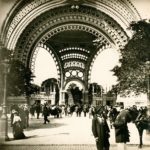

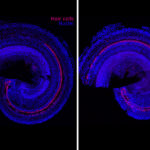
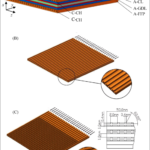
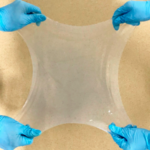


I imagine that the neurological circuits underlying these processes are governed by both 2d spacing maps with their brains as…
to reduce the impact of car accidents, it may be possible to study the force diverting physics of cockroaches to…
you see this type of head-bobbing stability in many avian creatures related to pigeons like chickens. the head ability to…
not like they taught horses how to run! this is an example of convergent evolution where both sea creatures and…
The brain functions in a similar way with neuronal connections. our brains are able to utilize the multiplicity of connections…